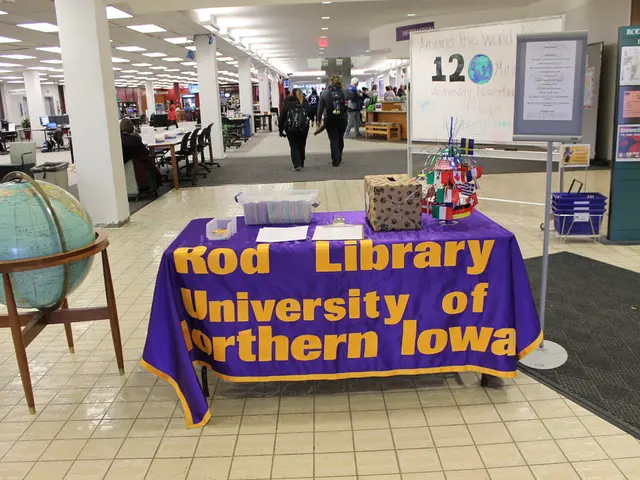Enhanced School Lunches: Nutrient-Rich Meals Nourishing Developing Brains and Bodies
Assembling nutrient-rich lunchboxes for growing children can be both fun and beneficial for their health. Here's a practical guide to creating supercharged lunchboxes that include bone-strengthening nutrients like calcium and brain-boosting nutrients like omega-3s.
### Bone-Strengthening Calcium-Rich Foods
Yogurt, either full-fat or Greek, is a great source of calcium. Mix it with berries and seeds for added nutrition. Cheese slices or cubes can also be included in the lunchbox, pairing well with crackers or used in sandwiches. Paneer sandwiches, a popular Indian option, are rich in calcium and protein.
### Brain-Boosting Omega-3 Rich Foods
Salmon, used in sandwiches or as part of a pasta salad, provides a boost of omega-3 fatty acids. Walnuts or chia seeds, when added to salads or used as a topping for yogurt or cereal, offer an extra dose of omega-3s.
### Balanced Lunchbox Ideas
Wholemeal sandwiches filled with tuna or salmon mayonnaise offer omega-3s, while ham and cheese provide calcium. Fruit and veggie sticks, such as apples or berries and raw vegetable sticks with dips, add fiber and vitamins. Tofu or hard-boiled eggs provide protein, supporting growth. Pumpkin muffins, a healthy sweet treat, can be packed alongside other nutritious items. Mixed Dal Cheela, an Indian option made from lentils, and Mini Idli Fry, a fun and nutritious option with coconut pesto, are other filling lunch ideas.
### Tips for Assembly
Variety is key when it comes to creating a supercharged lunchbox. Ensure a mix of protein, healthy fats, complex carbs, and fiber in each lunchbox. Involve your child in the process to encourage them to eat a variety of foods. Use compartmentalized containers to keep foods separate and organized, making mealtime more enjoyable.
Calcium is essential for building strong bones and preventing fractures. Sources of omega-3s include fatty fish, walnuts, flaxseeds, chia seeds, and plant oils like flaxseed oil. Sources of magnesium include spinach, nuts, seeds, whole grains, and legumes. A supercharged meal contains a variety of nutrients, including protein, vitamins, and healthy fats.
Protein is important for growth, building collagen, repairing bone tissues, and brain function. Sources of protein include lean meats, legumes, eggs, dairy, and plant-based proteins like quinoa and tofu. Creating a supercharged lunchbox is important for supporting children's growth and development.
Sources of vitamin D include fortified milk, fortified cereals, eggs, fish (like salmon), and exposure to sunlight. Sources of vitamin K include leafy greens such as kale, spinach, and broccoli, as well as fermented foods like sauerkraut and natto. Vitamin K helps in the process of bone mineralization and aids in maintaining bone density.
Omega-3 fatty acids are essential for brain development and support cognitive function. Sources of calcium include dairy products, fortified almond milk, leafy greens, tofu, and almonds. Magnesium supports bone structure by regulating calcium levels in the body. Iron is a mineral that plays a major role in improving cognitive function, boosting energy, and supporting healthy red blood cells.
By incorporating these nutrient-rich foods into lunchboxes, parents can help ensure their children are getting the essential nutrients they need for growth and development.
- To fuel a child's growth, yogurt, whether full-fat or Greek, can be a great calcium source, enriched further with berries and seeds.
- Cheese slices or cubes, packed alongside crackers or incorporated into sandwiches, offer calcium and protein.
- Paneer sandwiches, popular in Indian cuisine, are rich in calcium and protein, making them a suitable lunch option.
- Salmon, used in sandwiches or as part of a pasta salad, provides an ample dose of omega-3 fatty acids.
- Walnuts or chia seeds, when added to salads or used as a yogurt or cereal topping, offer an extra boost of omega-3s.
- Wholemeal sandwiches filled with tuna or salmon mayonnaise offer omega-3s, while ham and cheese provide calcium.
- Fruit and veggie sticks, such as apple slices or berries, and raw vegetable sticks with dips, add fiber and vitamins to the lunchbox.
- Tofu or hard-boiled eggs provide protein, supporting growth during development.
- Pumpkin muffins, a healthy sweet treat, can be packed alongside other nutritious items for a balanced lunch.
- Mixed Dal Cheela, an Indian dish made from lentils, and Mini Idli Fry, a fun and nutritious option with coconut pesto, are other filling lunch ideas.
- Variety is crucial when creating a nutrient-rich lunchbox, ensuring a mix of protein, healthy fats, complex carbs, and fiber.
- Involving your child in the lunchbox creation process encourages them to eat a variety of foods and fosters curiosity.
- Compartmentalized containers can keep foods separate and organized, making mealtime more enjoyable for children.
- Calcium is vital for building strong bones and preventing fractures, found in dairy products, fortified almond milk, leafy greens, tofu, and almonds.
- Omega-3s, essential for brain development, can be sourced from fatty fish, walnuts, flaxseeds, chia seeds, and plant oils like flaxseed oil.
- Magnesium, crucial for bone structure, can be found in spinach, nuts, seeds, whole grains, and legumes.
- Iron, a key mineral for cognitive function, energy levels, and healthy red blood cells, can be found in lean meats, legumes, eggs, dairy, and plant-based proteins like quinoa and tofu.
- Vitamin D, necessary for bone health, can be sourced from fortified milk, fortified cereals, eggs, fish, and exposure to sunlight.
- Vitamin K, essential for bone mineralization and maintenance of bone density, can be found in leafy greens such as kale, spinach, and broccoli, as well as fermented foods like sauerkraut and natto.
- By offering a variety of nutrient-rich foods, parents can help ensure their children are getting the essential nutrients they need for growth and development.
- Sources of protein, vital for growth, repair, and brain function, include lean meats, legumes, eggs, dairy, and plant-based proteins.
- Sustainable-loving parents can choose plant-based proteins like tofu for their children's lunchboxes, contributing to a healthier planet.
- Love for cooking can be passed onto children by involving them in the process of creating nutrient-rich lunchboxes, promoting lifelong learning and skills.
- Growing families can find inspiration in global cuisines, exploring recipes for homemade sushi, Indian dishes, or Mexican burritos that incorporate healthy nutrients.





